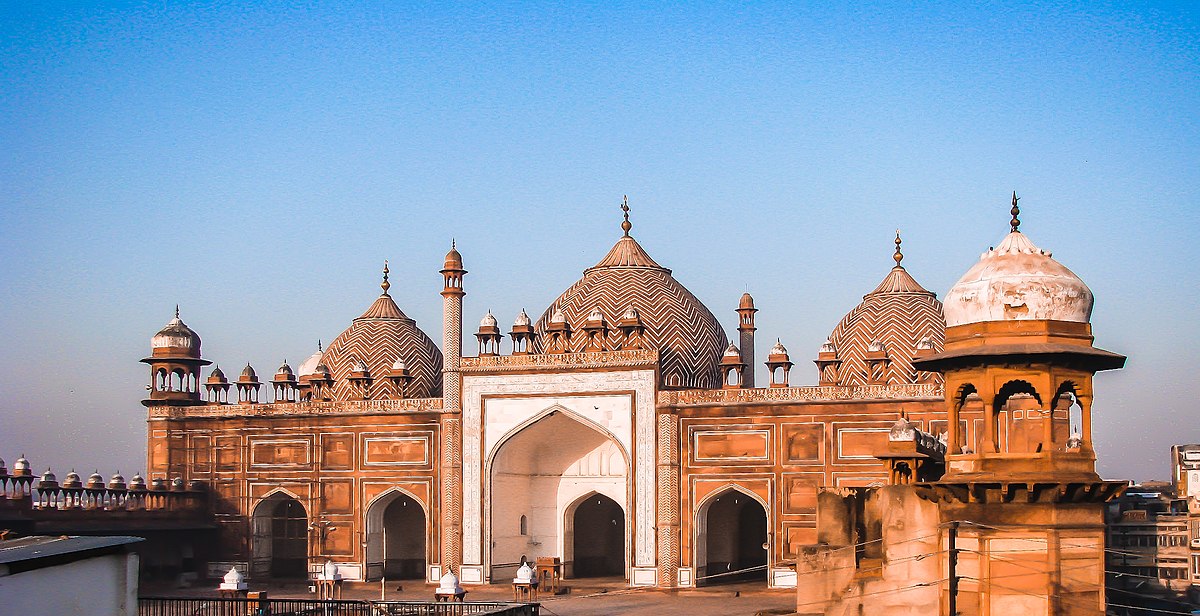
Jahanara Begum commissioned the Jama Masjid after receiving permission from Shah Jahan. Its construction began in 1643 and was completed in 1648, coming at five lakh rupees. The mosque was part of several imperial reconstruction projects undertaken to improve Agra, the then-capital of the Mughal Empire. There was a spacious, octagonal Tripolia Chowk between the Jama Masjid and the Delhi gate of the Agra Fort. The main entrance is through the eastern side. The prayer chamber has a façade with a broad arched iwan in its center and is adorned with slender turrets alternated with kiosks. Its dome is the largest and highest of the three domes crowning the sanctuary. All the bulbous domes have inverted lotus and Kalash finials on the top and have narrow zigzag courses of white marble alternated by broad bands of red stone. There is a fountain with four kiosks in its corners in the center of the courtyard. The interiors of the western wall have a beautiful mihrab and pulpit in white marble. The Persian inscription in white marble inlaid with the black stone on the archway of the central portal is in praise of Jahanara and Shah Jahan. The pristine beauty of the mosque must have been breathtaking as it was compared to the Beaty of the Baitul-Mamur, the fabulous mosque of rubies and pearls situated in the fourth sky. It was once surrounded by a marketplace called Tripolia set in an octagonal (Muthamman) Chowk that was built between the Delhi Gate and the Jami Masjid. But, it was later destroyed in 1871-73 A.D. to acquire space for laying down the railway tracks for the city. It required 5,000 workers to finish. The Jama Masjid of Agra is constructed of red sandstone with intricate white marble decorations. The walls and ceilings of the mosque are painted blue. It is a huge mosque in the center of Agra surrounded by a great bazaar. The mosque itself stands on a high platform to which a flight makes the ascent of 35 steps. It was designed to attract the eye of the faithful from afar and proclaim the glory of Islam. It has well-balanced proportions and a courtyard surrounded by cloisters on three sides and the prayer chamber on its western side. The cloisters have engrailed arches supported on pillars. All the bulbous domes have inverted lotus and kalash finials on the top and have narrow zigzag courses of white marble alternated by broad bands of red stone. There is a fountain with four kiosks in its corners in the center of the courtyard. Along with the wings of the main prayer wall are panels of beautifully inlaid sandstone, similar to those decorating the main gateway of the Taj Mahal. Still in use today, the mosque is one of the city's main landmarks and serves as a useful reference point when exploring the crowded bazaars that sprawl from its base. These are laid out in a street plan that's barely altered since Mughal days. Jami Masjid is beautifully decorated with paintings, inlaid stones, carvings, and glazed tiles. The building comprises of pillared dalans (arcades), a beautiful chhajja, and the chhatri on the roof. The main iwan of the building is rather simple and contains a central arch with geometrical designs.